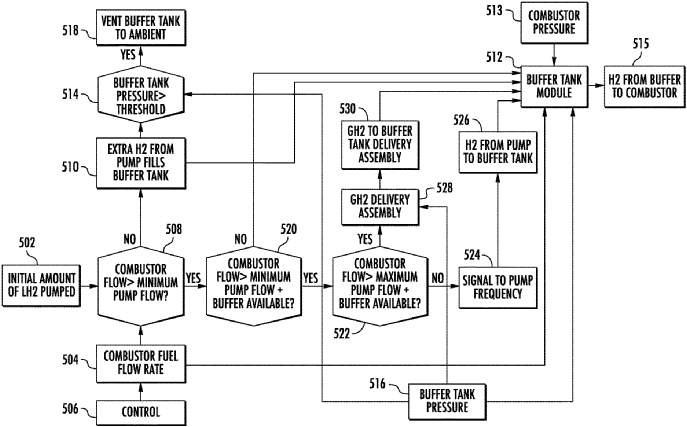The recent patent filed by the General Electric Company marks a significant step forward in advancing hydrogen fuel system technologies.
The patent describes a sophisticated fuel system incorporating both liquid and gaseous hydrogen storage capabilities. This dual-phase storage approach allows for greater versatility and efficiency in the vehicle’s operation. The liquid hydrogen fuel tank holds hydrogen in a liquid phase, while a separate gaseous hydrogen tank stores it in a gaseous phase. This hybrid infrastructure ensures that vehicles can operate efficiently under varying conditions and demands.
The patented technology includes a carefully designed fuel delivery assembly. This system comprises both a liquid hydrogen delivery assembly and a gaseous hydrogen delivery assembly. The liquid hydrogen delivery assembly features a pump that efficiently circulates liquid hydrogen through the system. In parallel, the gaseous hydrogen delivery assembly supports the flow of gaseous hydrogen fuel. The dual assembly design ensures that hydrogen is delivered to the vehicle’s engine effectively, irrespective of its phase.
An integral part of the system is the regulator assembly, which is in fluid communication with both delivery assemblies. This regulator ensures the controlled and efficient provision of gaseous hydrogen fuel to the engine. By managing the pressure and flow, the regulator plays a key role in optimizing fuel use and ensuring the engine receives fuel in the required state for optimal performance.
General Electric Company’s patent reflects ongoing efforts to enhance hydrogen fuel systems, offering potential improvements in vehicle efficiency and sustainability. By enabling the use of both liquid and gaseous hydrogen phases within a single system, the technology promises more adaptable fuel solutions for hydrogen-powered transportation. This innovation could influence future designs in hydrogen fuel applications, contributing significantly to the evolution of clean energy vehicles.
